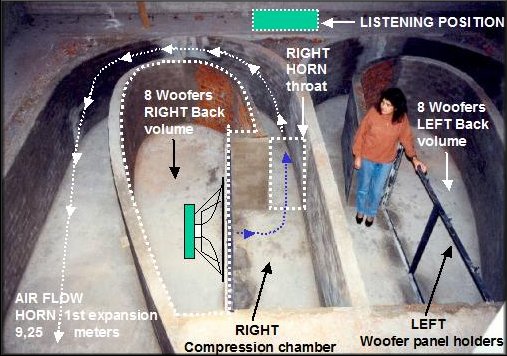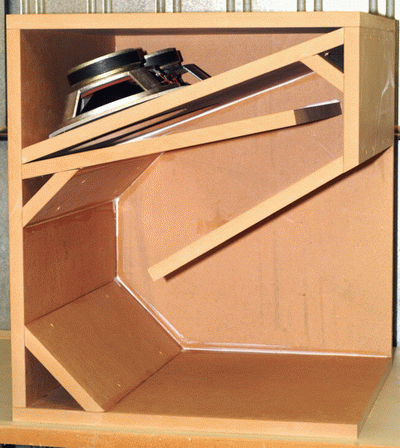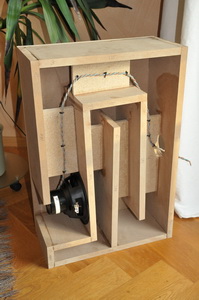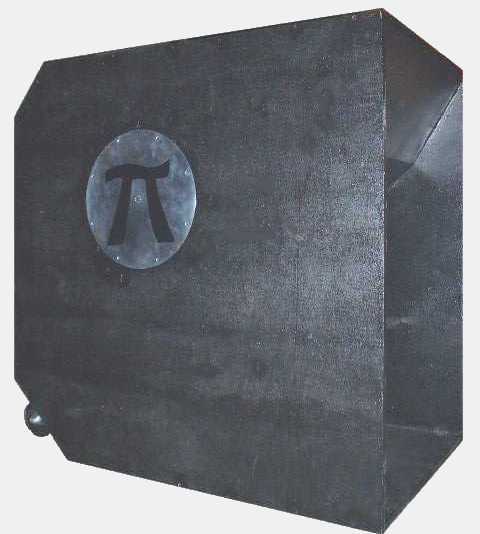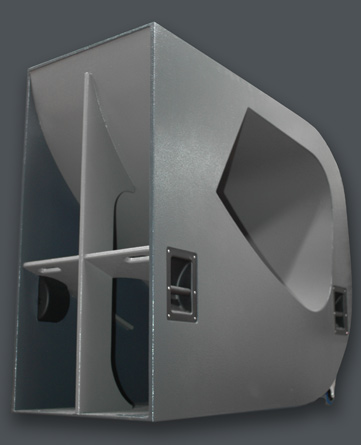Update
I strongly recommend that you aim to add bass traps to your room. Not convinced it's worth it? Take the free bass trap test. I have found bass traps make a bigger difference than the EQ shown here, although both together is even better.The room is 4.65m wide, 3.9m deep with a fairly high 2.85m ceiling. It's lightly constructed with timber floor, plasterboard lining and light exterior cladding. The entire room is like a big bass trap although I've added some extra layers of plasterboard. Unless you have a very big room, you probably won't get much better and if you have concrete and bricks then you may have bigger bass problems than you see here.
So here is the response for the subwoofers:

Green: left sub
Red: right sub
Black: both combined
Horizontal divisions are 8db
Both are in corners and as I sit left of centre there is a different response for each. Combining them makes their midbass gain wider. They both have a dip around 70 Hz and higher up the crossover kicks in. You can see the combined response tracks the maximum output, and dips are not subtractive. You can see towards the bottom end, they tend to combine better. Down there we get about 4db gain from using two subs - not the 6db that is typically predicted. So you can see that two subs don't gain a massive output increase, but provide some smoothing. In this case, if you were to use just one sub, you would choose the right corner.
Don't pay too much attention to the absolute levels. In some cases I had to adjust the levels between measurements. Only consider the levels relative to the other curves in each chart. These measurements were taken for my own experiments, not for this blog post!
Next the main speakers. These were my TL speakers, which I've since sold to a happy new owner. More details on the speakers >

Magenta: left TL
Brown: right TL
Black: combined
You can start to see some benefit here in the mains having bass, rather than simply setting them to small and rolling off the bass. They are a bit flatter where the corner subs have dips. They still have the mid bass peaks, but don't seem to suffer the 70 Hz dip, which would take quite a bit of power to boost.
Notice how they help each other? Two dips around 100 Hz improve and overall we have a result combined that is better than either curve. If we were to see a 1/3 octave smoothed chart (which is more like what we actually hear) then we would see simply a series of broad peaks. In fact these charts show that if we didn't have EQ ability, the mains would probably sound the most accurate. Most would turn off the subs for music and be happy with that.
No smoothing
I prefer to look at unsmoothed charts for bass as they are useful to see what is happening. However, they tend to exaggerate problems and show things we can't hear. We perceive something more like 1/3 octave smoothing, as shown below:

What this shows is that we could use a little boost for the bass overall, and we could smooth out the bass humps a little, but for an in-room result, that is pretty good.
Now, I'll combine everything:

Green: TLs
Red: subs
Black: all combined
Blue: final result with EQ and smoothing - level raised for clarity
Note: levels are not correct!
During measuring, sometimes the levels have to be changed due to clipping. The level of each curve has been manually adjusted to what I think they probably should be.
So you can see the TLs are nice and smooth, but don't give me all the extension I'm looking for as well as bass impact. The subs have this and do pretty well in their range, but the mains are needed to fill in the 70 Hz dip. The black curve shows all combined with the mains running down to 60 Hz - high pass filtering provided there so they go no deeper than I actually need. Then the blue curve shows the final result after EQ has been applied with some parametric filters. I've smoothed only this curve so you can see it as it would sound to the ears (1/3 octave smoothing). I used a number of parametric filters to pull out the peaks and fill in some dips. I've set it up to avoid the dips being too bad.
Conclusion
With all these four bass sources now combined and calibrated nice and flat, the result is better than I could achieve with any of the parts on their own. What you can't tell from these measurements, is that the bass has more brute force than the mains are capable of, yet the subs are more articulate than they would be if set up without this kind of attention. Desipte being very capable and accurate they could in fact sound fat and bloated through no fault of their own, simply due to room effects. When trying to do this by ear, you end up with an inferior result. You end up changing the volume. You will hear music that hits those peaks and set the level based on them, but at other points the bass is missing so you turn it up. You end up with an unhappy compromise with less bass than you want at times, due to turning it down to try to tame the peaks. The final result that you see here combines the best of both the TL mains and the subs. The subs add impact, extension and force without making the bass less accurate.
Where do I go from here? I hope to get a flatter response still prior to EQ and add headroom to all the bass sources, with my new mains with some Acoustic Elegance woofers and horn loaded versions of the subs, along with a third tapped horn for the very low frequencies.
Equipment used:
Behringer ECM8000 measurement mic
Behringer Xenyx 502 mixer (preamp mic)
Room EQ Wizard software
More about a simple measurement setup >
It's also important to note that in my room, I have two critical seats and they measure almost identically. In many other rooms this won't be the case, and more measurements are needed.









